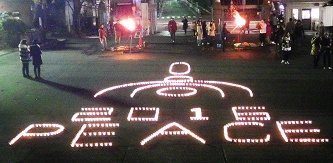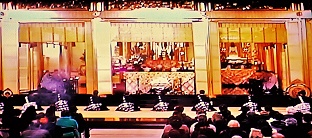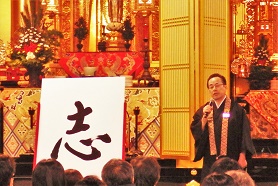At the Hamarikyu Garden, a demonstration of Suwa style hawk art is held  every year on the 2nd and 3rd of New Year's Day.
every year on the 2nd and 3rd of New Year's Day.
On both days, it will be held twice at 11:00 and 14:00.
Based on the instructions given earlier,
"Edo style hawk art" means that during the Edo period, there were two groups of hawkers belonging to the Shogun family, and they were called "Yoshida style" and "Suwa style". The name "Suwa-ryu" comes from the Shinto ritual, which offers birds caught by hawks at Shinshu Suwa Taisha Shrine, to the shrine.
The details of the demonstrations held in the garden are:
"Setting up" ... To stop the hawk stably on a horizontal fist.
"Transfer (review)" ... Fly the hawk from the falconer's fist to another falconer's fist and adapt to others.
"Watari": Call the hawk on the tree back to the fist.
"Furibato" ... One falconer swings a pigeon with a thin string (sometimes using pseudo-bait) and calls a hawk from a tree or from another falconer's fist.
"Suekae" ... Let the fist of a person other than the falconer stop the hawk.
One of the highlights is the demonstration  of releasing a hawk from the rooftop of the Dentsu Building and descending directly to the falconer waiting in the Hamarikyu Garden.
of releasing a hawk from the rooftop of the Dentsu Building and descending directly to the falconer waiting in the Hamarikyu Garden.
Recently, it is very popular among foreigners living in Japan and tourists visiting on bus tours.
Demonstration of traditional Japanese hawk art, it will cool down from your feet , so please take measures
, so please take measures  to prevent cold.
to prevent cold.
Click here for information on Hamarikyu Garden. http://www.tokyo-park.or.jp/park/format/index028.html
*They may fly in unexpected directions, being stimulated by natural conditions, hawk's condition, dragonflies, crows, etc. That's interesting again.
Demonstration may be canceled if it takes time for hawks to fly and find.
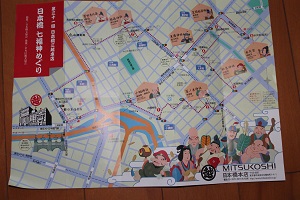
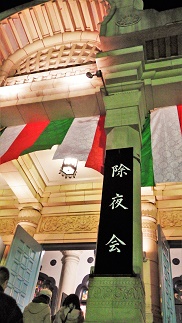
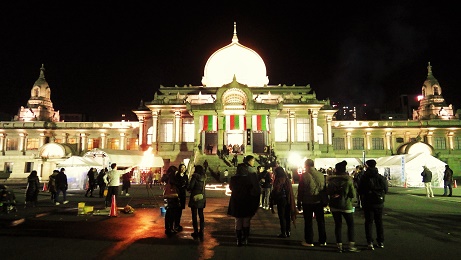 "amazake and Cocoa
"amazake and Cocoa 